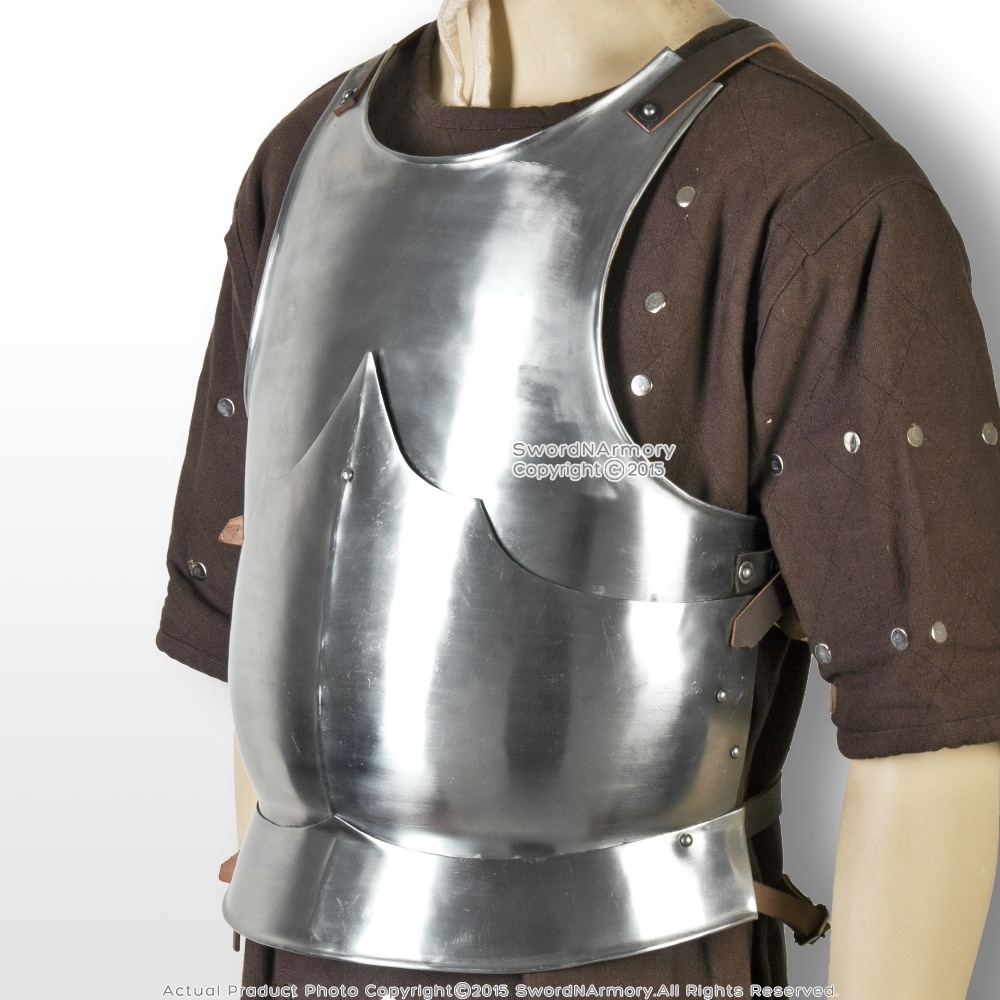The Cushioning Aspect of Medieval Armor
Posted by Sword N Armory on Jul 10th 2017

Medieval armor is appreciated today mostly as works of art. It can be quite easy to forget that once upon a time these items were intended to be worn as a way to protect the wearer from imminent injury or even death. Despite the heavy, uncomfortable façade these suits portray, they did provide elements of comfort and cushioning to the wearer from falls and other injuries although not to the extent that today’s versions are able to.
A Variety of Materials
When one pictures a suit of armor, they typically imagine a heavy, shiny, metal suit that looked hugely uncomfortable and cumbersome to wear. However, in medieval and Renaissance Europe, the suits were generally made from a blend of materials including metal, leather, and fabric. Plate armor was often crafted from steel and leather which would be hardened by boiling in wax or oil (Breiding, 2002).
Under Armor
Knights and other men also wore a jupon or a gambeson under the armor to provide a cushioning layer of protection in the event they fell or were hit. A jupon, also referred to as a fighting cotte, was first created in the fourteenth century. It was a tight fitting padded garment that was worn over armor and often displayed the family colors or coat of arms (Medieval Fight Club, 2017). A gambeson is a quilted jacket dating back to the fifteenth century that offered padding and was sometimes called an aketon, a padded jack, or an arming doublet. It was made from linen or wool and stuffed with a variety of materials including scraps of cloth or even horse hair. These components were extremely helpful should a knight fall and hit the ground, as they would be more protected from fall injuries or those caused by the armor itself (Grindley, 2006).
Mail Armor
Mail armor originated over 3,000 years ago and featured a mesh of interlinked iron metal rings. It is commonly called chain mail. It was work over quilted clothing and was another layer meant to both cushion and protect from cuts or injuries caused by items such as arrows or lances. This form of armor was very effective and lighter in weight than other metal protection (Breiding, 2002).
Evolutionary Changes
Just as fashion evolves, so did armor. Over time more protection was added to keep the wearer safer. Coifs were added to offer both neck and head protection. Knees and elbows were protected by guards (Medieval Fight Club, 2017). Helmets were also an area that was constantly redeveloped. Eventually the helmet was redesigned to cover the entire head. However, the helmets were quite heavy and could cause injuries like a concussion during a fall. To combat this, knights and men at arms often bandaged their heads to prevent such issues, while causing new problems like being unable to hear orders and commands due to the head cushioning muffling sounds (Breiding, 2002).
As weaponry grew more sophisticated, so did the armor worn to protect men from injury and death. New techniques in metal working also allowed for new technologies that aided in the improvement of armor. Eventually the discovery of gunpowder and it’s utilization on warfare meant an end to wearing the traditional suits of armor.
Today’s Armor
A quick search on google can help anyone interested in purchasing armor cushioning elements like jupons or gambesons. The products available today are of a higher quality and made with materials that are comfortable and less likely to irritate skin. Armor replications available to costuming or re-enactment purposes are lighter weight, more comfortable, and have better mobility as well (Medieval Fight Club, 2017).
Body armor in its current state is a far cry from that of Medieval times. The addition of new components to existing armor materials has greatly improved the weight and function of these pieces. Kevlar is one such element commonly used today. It can stop bullets and is lighter in weight than metal and flexible (Wilson, 2017).
Newer technologies are being developed and tested involving liquid body armor. These methods use Kevlar, which is soaked in one of two fluids. The first one is a shear thickening fluid, STF, which hardens a few milliseconds after being hit. The second fluid is magnetorheological, MR, fluid. MR fluids are oils filled with particles of iron. When exposed to a magnetic field the particles align and create a hard, nearly impenetrable surface. The process takes twenty-thousandths of one second (Wilson, 2017).
In closing, the technologies involved in the creation and cushioning of metal armor suits have grown by leaps and bounds thru the years. From heavy suits cushioned by quilted shirts of horse hair to specialized Kevlar, the way people protect themselves continues to evolve. Thru trial and error, new methods can be applied to ensure that the proper level of cushion is achieved to protect and prevent injury.
References:
Breiding, D. (2002). The Function of Armor in Medieval and Renaissance Europe. Retrieved from http://www.metmuseum.org/toah/hd/ufarm/hd_ufarm.htm
Grindley, C. J. (2006). Arms and the Man: The Curious Inaccuracy of Medieval Arms and Armor in Contemporary Film. Film & History: An Interdisciplinary Journal of Film and Television Studies, 36(1), pp. 14-19.
Medieval Fight Club. (2017). White and Black Gambesons. Retrieved from https://www.medieval-fightclub.com.au/armour/padded-armour/gambesons/white-and-black-gambeson-jupon.html?sl=en
Wilson, T. (2017). How Liquid Body Armor Works. Retrieved from http://science.howstuffworks.com/liquid-body-armor2.htm










